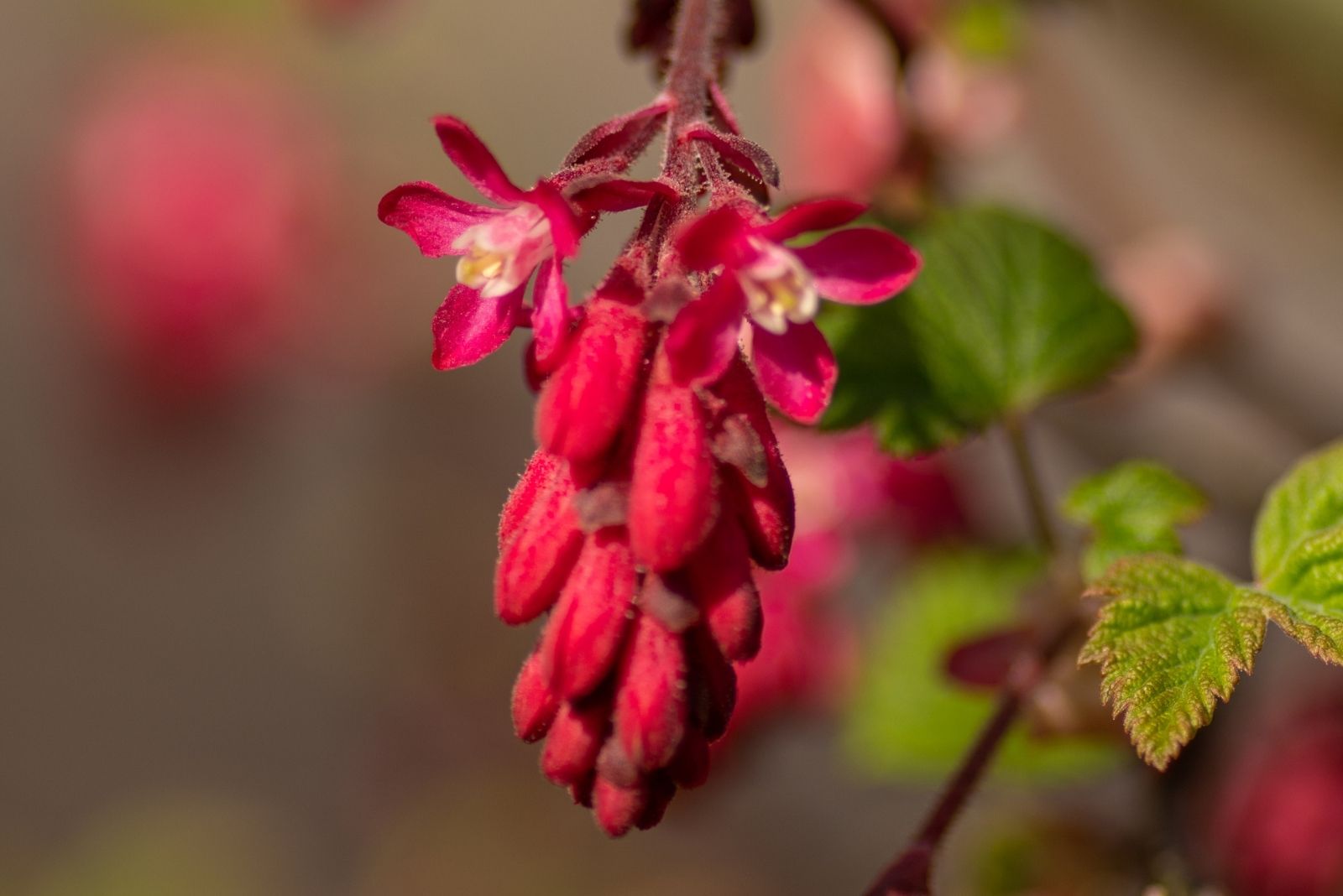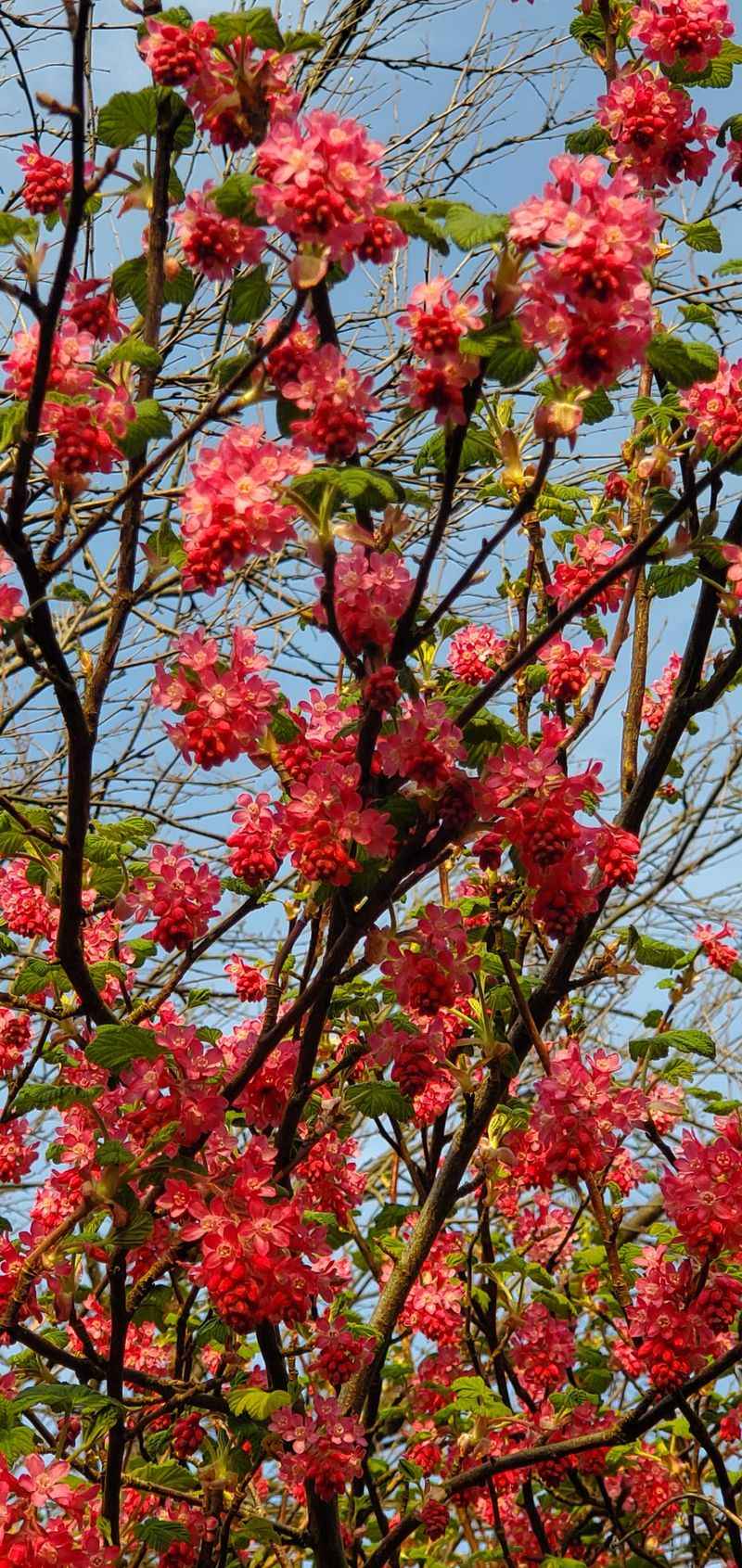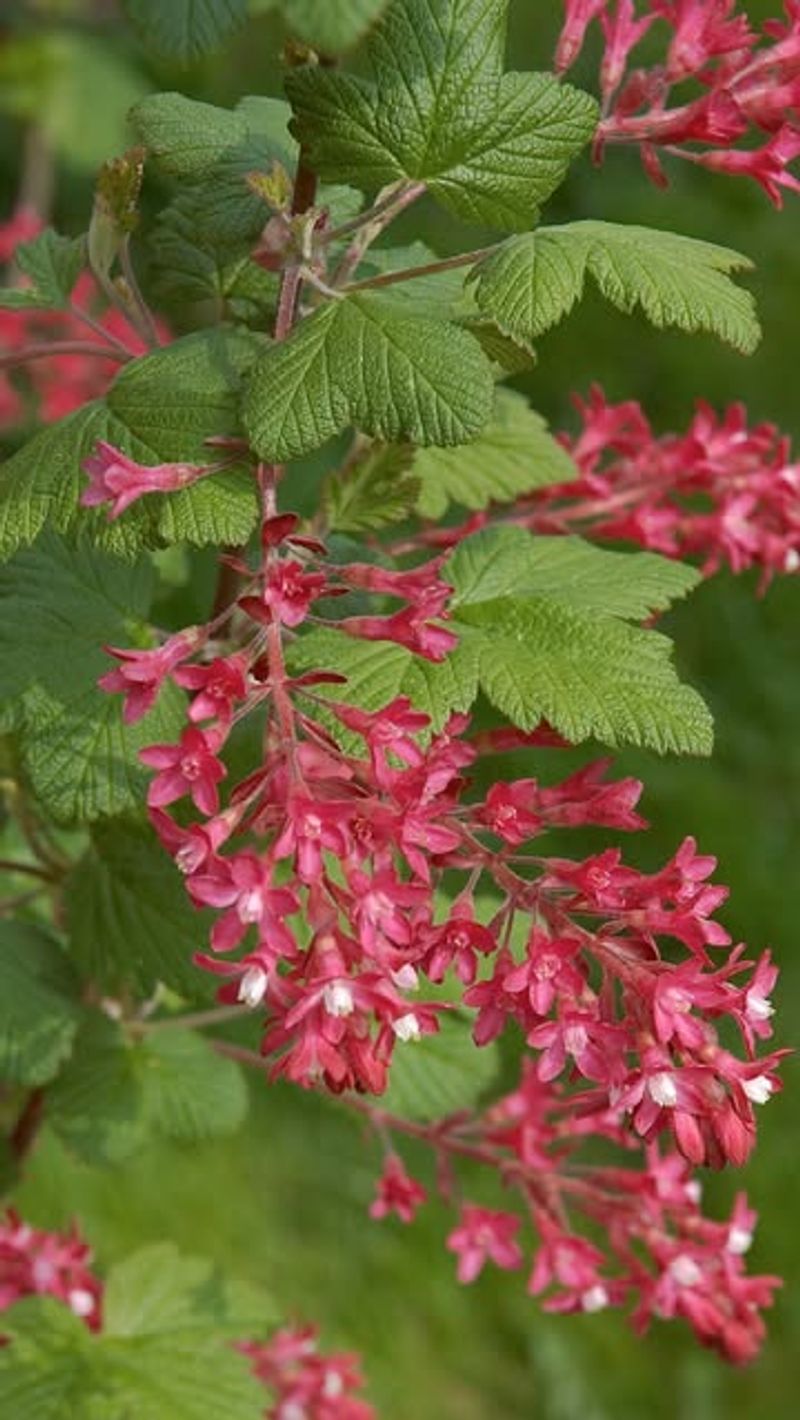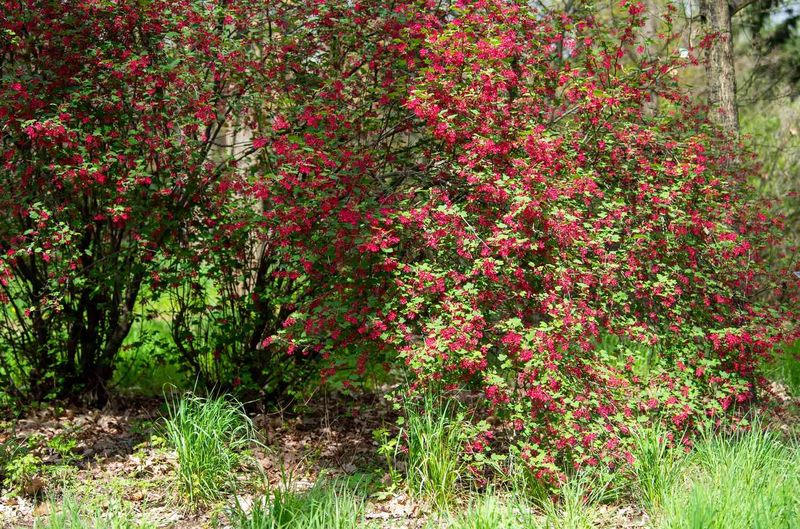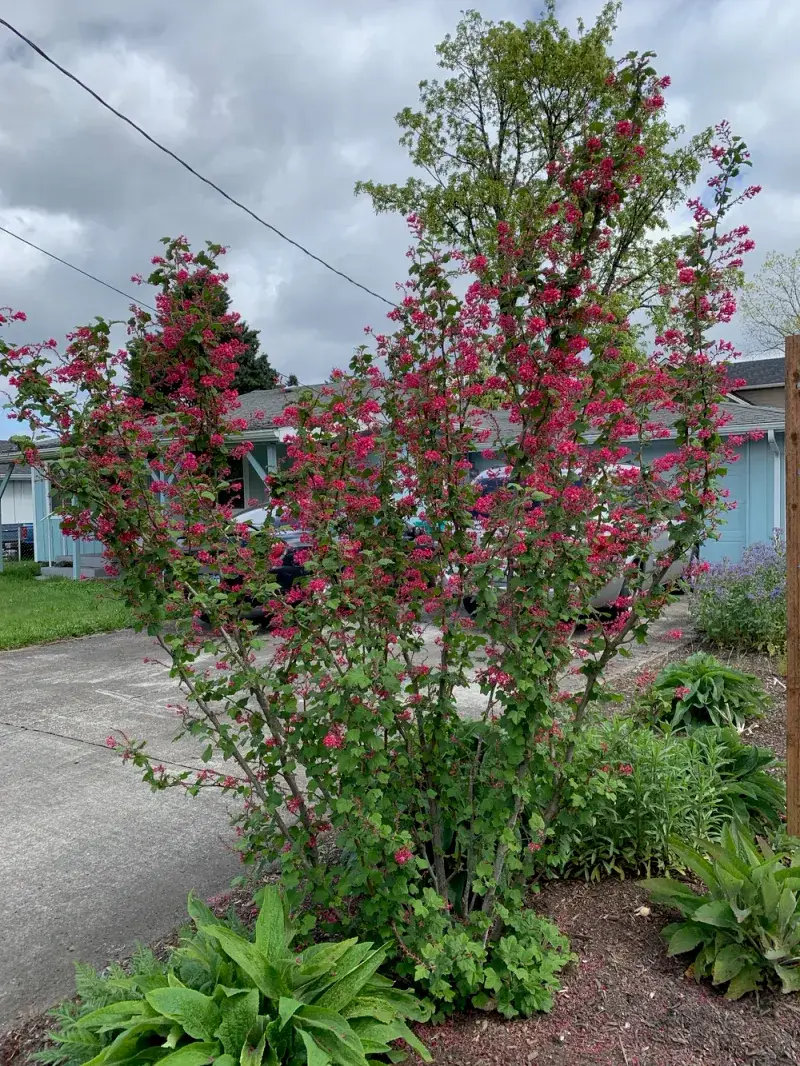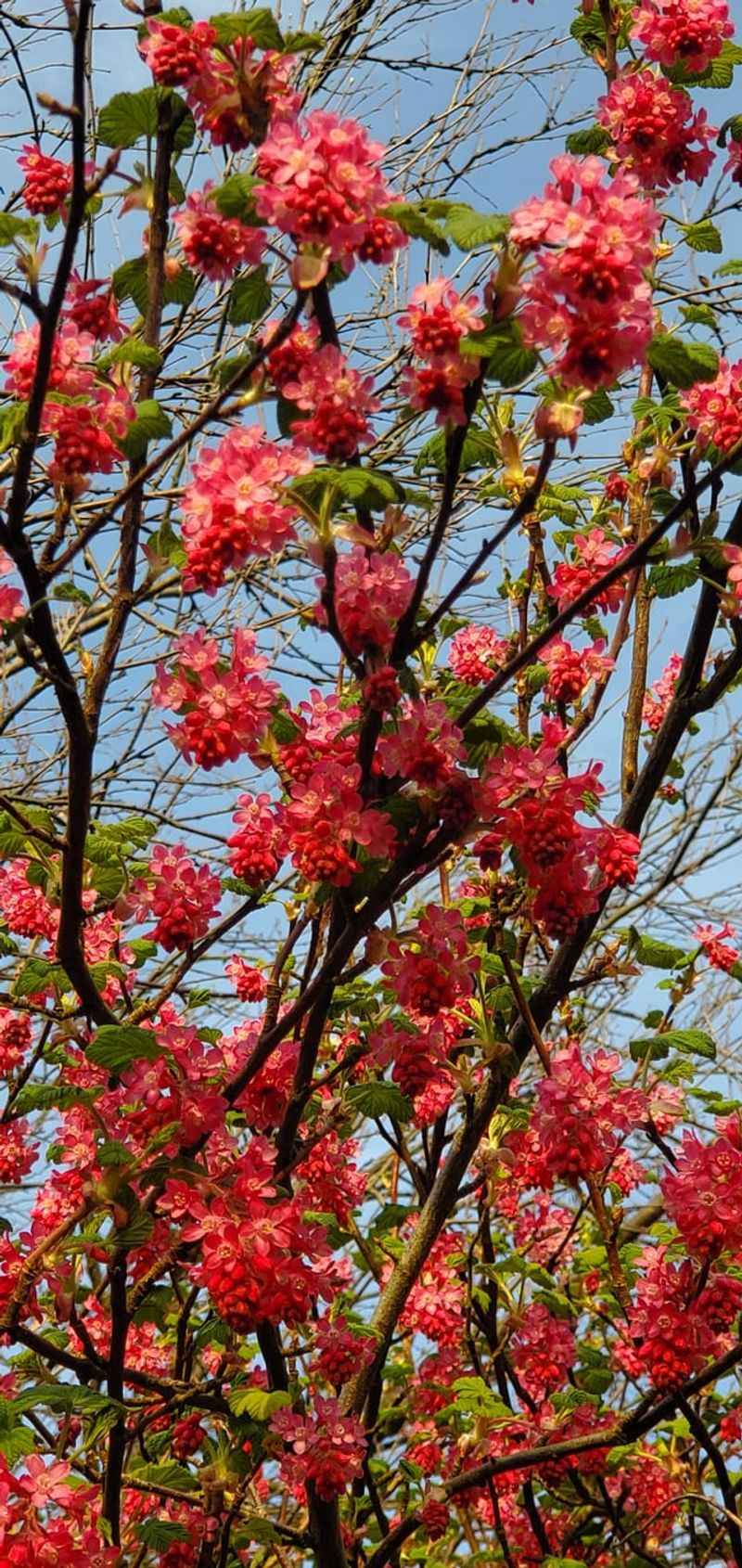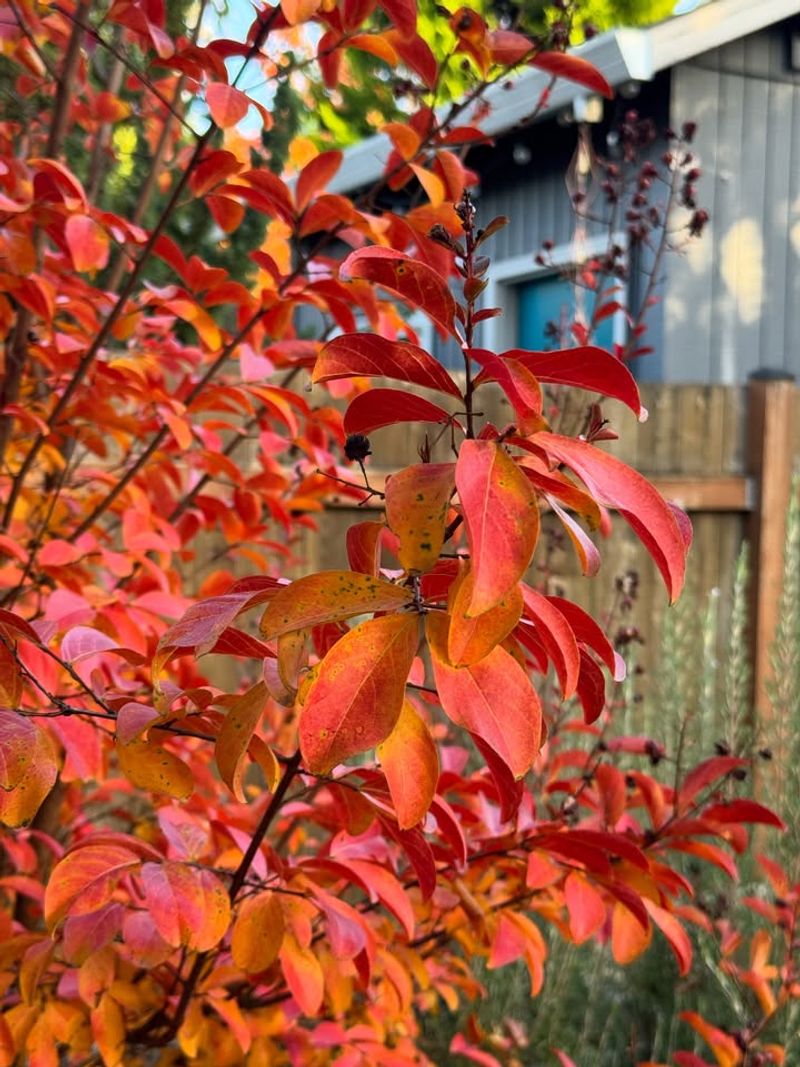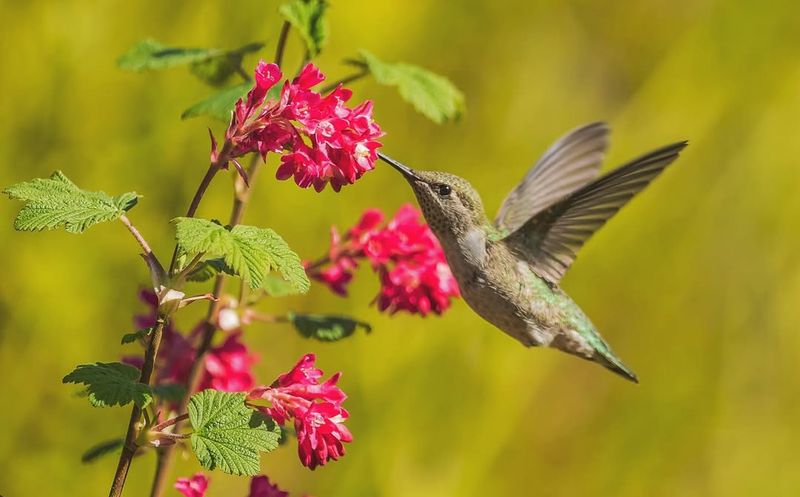Washington gardens come alive each spring with native plants that bring color and life to outdoor spaces. Among these beauties, the red flowering currant stands out as a true champion for both gardeners and wildlife.
This remarkable shrub offers stunning blooms, easy care, and countless benefits that make it a must-have for any Pacific Northwest landscape.
1. Early Spring Blooms Brighten Gray Days
When winter’s gloom still lingers across Washington, red flowering currant bursts into bloom with clusters of rosy-pink flowers. These cheerful blossoms appear as early as February or March, offering a welcome splash of color when most plants remain dormant.
Gardeners appreciate this early show because it signals spring’s arrival and lifts everyone’s spirits. The drooping flower clusters hang like tiny chandeliers, creating an elegant display that lasts several weeks before other plants even wake up.
2. Hummingbirds Flock To Tubular Flowers
Hummingbirds returning from migration make a beeline for red flowering currant shrubs, drawn by the nectar-rich tubular blooms. These tiny birds depend on early-flowering plants to refuel after their long journey north.
Watching hummingbirds dart between flower clusters provides endless entertainment for nature lovers. Your garden becomes a vital pit stop for these amazing creatures, helping them survive and thrive in Washington’s ecosystem while giving you front-row seats to their aerial acrobatics.
3. Native Plant Supports Local Ecosystems
As a Pacific Northwest native, red flowering currant has evolved alongside local wildlife for thousands of years. This deep connection means countless insects, birds, and animals rely on this plant for survival. Choosing native plants strengthens your local ecosystem and reduces maintenance headaches.
Red flowering currant thrives in Washington’s climate without extra water, fertilizer, or fussing once established, making it both environmentally friendly and budget-smart for gardeners who want beautiful results with minimal effort.
4. Drought Tolerance After Establishment
Summer water bills can skyrocket when thirsty plants demand constant irrigation. Red flowering currant solves this problem by developing deep roots that tap into moisture below the surface.
After the first year or two, this shrub handles Washington’s dry summers without weekly watering. You’ll save time, money, and precious water resources while still enjoying a lush garden that looks great even during heat waves when other plants wilt and struggle.
5. Edible Berries For Wildlife And Humans
Did you know? After the flowers fade, small blue-black berries develop that attract cedar waxwings, robins, and other songbirds to your yard.
Humans can also sample these tart berries, though they’re better suited for jams and jellies than eating fresh. Indigenous peoples of the Pacific Northwest traditionally harvested these fruits, adding cultural significance to this already valuable shrub that feeds both people and wildlife throughout the growing season.
6. Thrives In Shade And Partial Sun
Many gardeners struggle to find plants that flourish in shady spots beneath trees or on north-facing slopes. Red flowering currant actually prefers these challenging locations, blooming beautifully where sun-loving plants would fail.
Partial shade to full sun both work well for this adaptable shrub. Whether your yard has towering Douglas firs or open spaces, you can successfully grow red flowering currant and enjoy its lovely flowers without worrying about light requirements.
7. Low Maintenance And Pest Resistant
Forget about spraying chemicals or battling constant pest problems. Red flowering currant naturally resists most diseases and insects, staying healthy year after year without intervention.
Pruning needs are minimal—just remove dead branches or shape the plant after blooming if desired. This hands-off approach appeals to busy gardeners who want gorgeous results without spending every weekend on yard work, making it perfect for beginners and experienced green thumbs alike.
8. Beautiful Fall Foliage Color
Spring flowers aren’t this shrub’s only trick. Come autumn, the maple-like leaves transform into warm shades of yellow, orange, and sometimes red before dropping.
This seasonal color change extends the plant’s ornamental value beyond its famous spring display. Your garden maintains visual interest throughout the year rather than looking boring once flowers fade, proving that red flowering currant earns its space in any landscape with multiple seasons of beauty and appeal.
9. Excellent For Erosion Control On Slopes
Steep banks and slopes pose real challenges for gardeners dealing with erosion and soil loss during heavy rains. Red flowering currant’s fibrous root system grabs onto soil and holds it firmly in place.
Planting several shrubs on problem slopes creates a living barrier against erosion while adding beauty to difficult areas. The roots work year-round to stabilize soil, protecting your property from washouts and creating habitat for beneficial insects and small creatures in the process.

